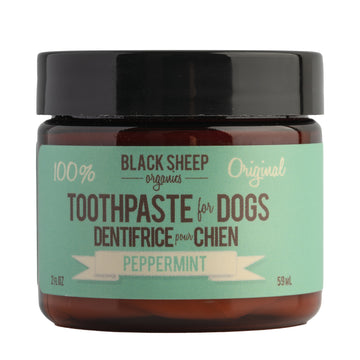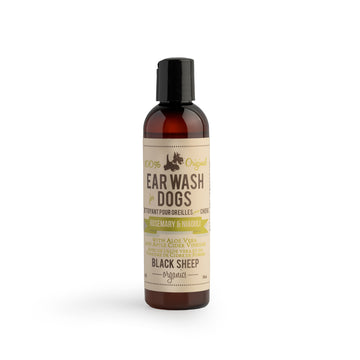Ever notice your dog frantically rolling in the dirt after a bath? It might leave you wondering, do dogs actually enjoy feeling clean? Shedding light on canine behavior and bath-time preferences, this post explores the science behind how dogs experience cleanliness. We'll unpack the biological and behavioral factors that influence a dog's reaction to a bath, offering insights to help you understand your furry friend's perspective on getting squeaky clean.
Why Might Some Dogs Dislike Baths?
To answer the question of whether dogs like being clean after a bath, we first need to understand their behavior. Several factors can contribute to a dog's aversion to baths:
- Sensory Overload: The sounds, smells, and sensations associated with bathing can be overwhelming.
- Previous Negative Experiences: Past experiences with cold water, harsh shampoos, or uncomfortable grooming tools can cause anxiety.
- Loss of Scent: Dogs rely heavily on their sense of smell. A bath can wash away familiar scents, leaving them feeling disoriented.
Are Dogs Happy After a Bath? Signs to Look For
Dogs express their emotions through various behaviors, and understanding these can help you gauge their post-bath mood.
Behavioral Signs That Indicate Happiness in Dogs Post-Bath
Dogs can display a range of behaviors that signal their contentment after a bath. Some key signs include:
- Zoomies: This is a common term for the bursts of energy that dogs often show after a bath. Running around energetically can indicate excitement and relief.
- Wagging Tail: A wagging tail is a universal sign of happiness in dogs. If your dog’s tail is wagging rapidly post-bath, they’re likely feeling good.
- Playfulness: Happy dogs often want to play. If your dog is fetching toys or engaging in playful behavior, it’s a positive sign.
- Relaxed Body Language: Look for a loose and relaxed body posture. A content dog won’t appear tense or stressed.
How to Make Bath Time a Positive Experience for Your Dog?
Making bath time enjoyable for your dog starts with understanding their needs and preferences. Here are some strategies to ensure a positive experience:
- Preparation:
- Calm Environment: Choose a quiet area with minimal distractions.
- Gather Supplies: Have all necessary items (shampoo, towel, brush) within reach before starting.
- Water Temperature:
- Use lukewarm water. Cold water can be uncomfortable, and hot water can be harmful to their skin.
- Gentle Handling:
- Use soothing tones and gentle touches throughout the process. Avoid sudden movements that might startle your dog.
- Shampoo Choice:
- Opt for a mild, dog-specific natural shampoo. Human shampoos can disrupt their skin’s pH balance and cause irritation.
- Positive Reinforcement:
- Offer treats and praise during and after the bath to create positive associations.
- Consider using bath toys or a lick mat to keep them occupied and happy.
- Post-Bath Care:
- Dry your dog thoroughly to prevent them from getting cold.
- Brush their fur to remove tangles and distribute natural oils.
Do Dogs Feel Better After Being Washed? The Benefits of Bathing
Bathing your dog regularly offers numerous benefits that contribute to their overall health and happiness. Here are some key advantages:
Physical Benefits:
Skin Health:- Regular baths help remove dirt, debris, and allergens that can cause skin irritation.
- Proper bathing can prevent infections caused by bacteria or fungi.
- A clean coat is less likely to become matted or tangled.
- Bathing helps distribute natural oils, giving your dog's fur a healthy shine.
- Bathing can wash away fleas, ticks, and other parasites.
- Pairing baths with anti-parasitic shampoos can enhance effectiveness.
- Regular cleaning reduces unpleasant odors, making your dog more pleasant to be around.
Psychological Benefits:
- Comfort:
- Clean skin and fur reduce itching and discomfort, improving your dog's overall comfort level.
- Regular bathing can be soothing, especially when combined with gentle massage techniques.
- Stress Reduction:
- A consistent grooming routine can reduce anxiety by providing structure and predictability.
- Positive reinforcement during and after baths can build trust and reduce fear associated with bathing.
Common Misconceptions About Dog Bathing
When it comes to bathing dogs, there are many misconceptions that can lead to confusion about best practices. Let's debunk some of these myths and provide clear, evidence-based information to help you make informed decisions about your dog's grooming routine.
Myths and Truths About Dogs and Their Bathing Habits
Myth 1: Dogs Should Be Bathed Weekly
- Truth: While some dogs may benefit from more frequent baths, most do not need to be bathed weekly. Overbathing can strip natural oils from their skin and coat, leading to dryness and irritation. Generally, dogs should be bathed every 4-6 weeks, but this can vary based on breed, activity level, and individual needs.
Myth 2: Human Shampoo Is Safe for Dogs
- Truth: As we mentioned earlier, human shampoos are not formulated for a dog’s skin and can disrupt their pH balance, causing irritation. Always use a shampoo specifically designed for dogs to ensure their skin remains healthy.
Myth 3: All Dogs Hate Baths
- Truth: While some dogs may dislike baths due to negative past experiences, others might enjoy the attention and the feeling of being clean. Gradually introducing your dog to bath time with positive reinforcement can help improve their comfort.
Addressing Common Concerns Dog Owners Have About Bathing Their Pets
Concern 1: Will Bathing Dry Out My Dog's Skin?
- Solution: To prevent dry skin, use a moisturizing, dog-specific shampoo and avoid overbathing. Following up with a conditioner can also help maintain skin and coat health.
Concern 2: How Do I Handle a Dog That Fears Water?
- Solution: Start slowly by getting your dog used to water in a non-threatening way. Use treats, toys, and positive reinforcement to create a positive association with bath time. Using a handheld showerhead can offer more control over water flow and reduce stress.
Concern 3: Can Frequent Bathing Cause Health Issues?
- Solution: Excessive bathing can lead to skin problems, but appropriate bathing frequency tailored to your dog's needs is beneficial. Consult with your veterinarian to determine the best schedule for your pet.
Expert Opinions on How Often Dogs Should Be Bathed
Experts agree that the frequency of bathing depends on several factors, including breed, coat type, skin condition, and lifestyle. Here's a general guide:
|
Dog Type |
Recommended Bath Frequency |
|
Short-haired breeds |
Every 6-8 weeks |
|
Long-haired breeds |
Every 4-6 weeks |
|
Dogs with skin conditions |
Follow veterinarian's advice |
|
Active outdoor dogs |
As needed, potentially more often |
|
Indoor dogs |
Less frequently, every 2-3 months |
Expert Tip: Always consider your dog's individual needs and consult your veterinarian if you're unsure about the appropriate bathing schedule for your pet.
So, while your pup might not be throwing a confetti party after a bath, understanding their communication cues and bath-time behavior can help create a more positive experience for both of you. Remember, a healthy coat and reduced allergens are just a few benefits of occasional baths. With the right approach, bath time can become a bonding experience you and your dog can both (eventually) enjoy.










